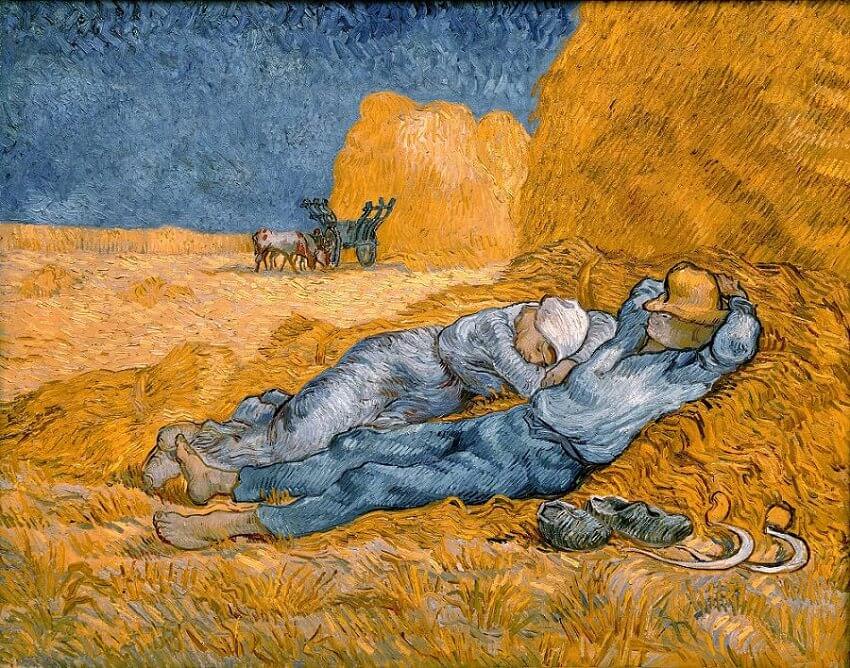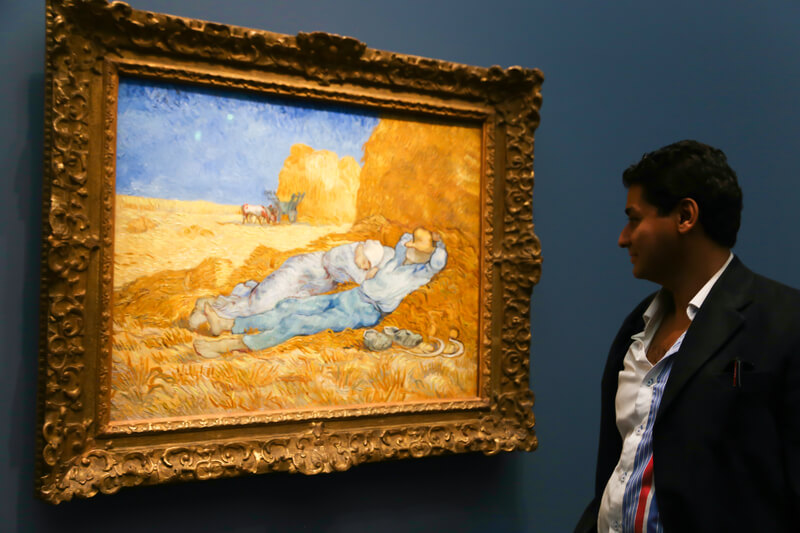Noon - Rest from Work (after Millet), 1890 by Vincent Van Gogh

In the autumn of 1889 and into 1890 Van Gogh embarked on a series of paintings taken from his collection of prints that included Jean Millet, Eugene Delacroix, Rembrandt, and Vermeer. It was a period when the artist was lacking in inspiration from external motifs - he had been at the asylum at Saint-Remy since May - and he was profoundly depressed. He once again turned to peasant subjects, and painted this picture after Millet's. The prints from which he worked were black and white, and consequently Van Gogh had to devise his own colour system, which undoubtedly he would have done anyway. Van Gogh often copied the works of Millet, whom he considered to be "a more modern painter than Manet".

Moving away from the Dutch colouring of his earliest peasant images, Van Gogh had now become greatly concerned with colour and its function on a symbolic and metaphysical level. Here the scene is drenched in the brilliant yellow of the field and sparkling blue of the sky, both of which were naturally occurring under the strong Mediterranean sun. However, his colours are beyond natural and are an exaggeration or a distillation of the world he saw. Despite the peaceful nature of the subject, the picture radiates Van Gogh's unique artistic intensity.




















